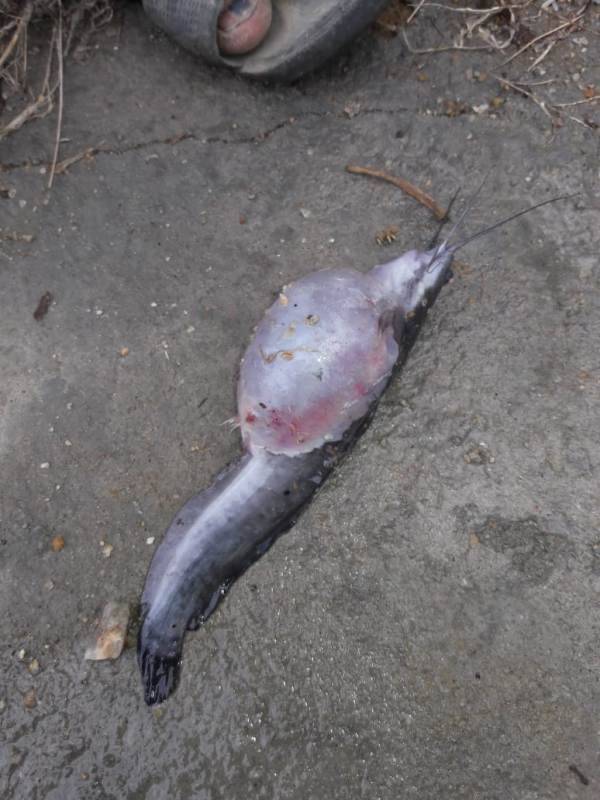
Introduction
Fish is a nutritious food item and consumed by a large population of India. Among the several types of fishes, the major carps hold a special position. But, often the production of the carps is hampered as they are very much vulnerable to different types of diseases. In order to provide proper treatment of the fishes, understanding of the causes and symptoms of those diseases are very much essential. Most of the diseases of the Indian major carp can be avoided by maintaining proper environmental condition through regular clearance of their surroundings and application of proper medicines. In this article, we have briefly described the common diseases along with their treatment and prevention. This will help the fish farmers of India to produce healthy and disease-free fishes and maintain a good production throughout the year.
Fish health problems
Freshwater fish health problems mostly arise due to various bacterial, fungal, protozoan or parasitic infections. Various external factors can contribute to various fish health problems. Factors like insufficient oxygen or poisoning from chemical interactions and physical or physiological imbalances can contribute to the developments of infections. When carps are in a stressed condition, especially from the poor environment and improper nutritional condition, a very wide range of diseases and parasites can affect them.
General causes of the diseases
It can be summarized that most of the disease outbreaks result from two combined factors, they are
-
The appearance of the disease organisms.
-
Abnormalities of the affected fishes (stress, malnutrition, adverse environmental conditions and handling abrasions).
General principles to avoid diseases
-
Good husbandry practices
-
Proper nutrition
-
High-quality water
Viral diseases
In tropical conditions, the virus does not create great problems for carps. Some common viral diseases are described below.
1. Infectious dropsy
This is one of the most complicated diseases consists of spring viremia of Common Carp and Swim-bladder inflammation. Both of them are caused by Rhabdovurus Carpio. It can occur at any age of the common carp.

Symptoms: Loss of balances, hemorrhages of skin and gill, bulging eyes otherwise known as exophthalmia, fish gathering near waterflows. Swim-bladder inflammation and infections are associated with rapid degeneration of the swim-bladder which proceeds towards shrunken chambers of the swim bladders of the carp and extensive necrosis and hemorrhages.
The appearance of the disease: Spring Viraemia of common Carp occurs in spring and early summer.
2. Fish Pox
This disease is otherwise known as epidermal epithelioma. This disease mainly observed in common carp.
Symptoms: Epithelial proliferation of the cells around the lateral line. In advanced condition, the epidermis increases many folds to make finger or cauliflower-like projections.
3. Gill Necrosis
This disease seems to be viral originated but not adequately studied.
Effective treatments of viral diseases
No effective treatments are invented for viral diseases. Prevention is the best policy for these diseases. Various preventive measures are described. They are achieved through the provision of proper nutrition, quarantine measures and destruction of infected one. Apart from the good husbandry practices, development of viral disease-resistant breeds can be the main weapon of the future to fight against the viral diseases of the carp.
Fungal diseases
1. Branchiomyces
Among the disease-causing fungus, the most serious one is branchiomyces. Bracchiomyces sanguinis generally situated in the blood vessel of the gill tissues of the carp. Another species of Branchimyces demigrans which growth is seen through the vessels and necrosis of the surrounding tissue is caused.
Gill rot is caused mainly by Branchiomyces demigrans. In most of the cases, the total mortality of the fish is associated with gill rot disease. Decaying vegetation such as weeds promote the growth of these fungi especially when the temperature exceeds 20° C.
Effective treatments Branchiomycosis
Liming treatment by 150-200kg calcium oxide/ha is recommended.
Water quality improvement can be the best approach for the prevention of these types of fungal diseases.
2. Saprolegnia
Another fungus named “Saprolegnia” affects mainly broodstock fishes after handling and stripping. The infection initially started as white or grey coloured mats on the skin which can spread extensively.
Bacterial diseases
-
The diagnosis of the bacterial disease conditions is very difficult because bacteria act as primary causative agents and secondary invader of ulcers and lesions both.
-
Most of the bacteria involved in the fish diseases are mainly gram-negative bacteria which requires a broad spectrum treatment range.
-
There are three most important bacterial diseases of cultured carp are identified, they are Carp erythrodermatitis, columnaris disease and hemorrhagic bacterial septicemia.
1. Carp Erythrodermatitis (CE)
This is an ulcerative skin condition, caused by Aeromonas Salmonicidia group of bacteria. Aeromonas salmonicida is considered as the causative agent of furunculosis in salmonids. Hemorrhagic ulcerative lesions occurred on the skin and fins but mortality is not so significant.
The drug is administered mixing with feed. A wide range of sulphonamide drugs is used against this disease. They are sulfamorazine sulfaguandine, sulfadiazine, sulfamethazine and sulfisoxazole.
Among the antibiotics, Terramycin is the most important one which can be incorporated either in feeds at 5-7g/100kg fish daily for 7-10 days or through intraperitoneal injections at 25mg/kg body wt has been tried successfully.
2. Columnaris disease
Main characteristics feature of this disease is the appearance of lesions usually on the head, back and gills. The causative agent of this disease is Flexi-bacter columnaris.
If gills are affected, then chances of mortality are very high. This disease is often associated with environmental stress especially a huge increase in water temperature. Treatment of the columnaris is very difficult, but the following have been suggested.
-
500 ppm copper sulfate dipping for 1-2 minutes.
-
5-10 ppm. Chloromycetin addition to pond/tank water.

3. Hemorrhagic septicemia
This bacterial disease is mainly caused by pseudomonas fluorescens. Silver carp and bighead carp are very much susceptible to this disease. Hemorrhages of skin, fins, buccal cavity and internal organs are seen followed by severe anemia and heavy mortality. Treatment is very difficult. Infected fish can be treated with oxytetracycline. Intraperitoneal injection with antibiotics like Kanamycin is done for valuable fishes.
Conclusion
The occurrence of diseases is the most common phenomenon for any living organisms. As fishes are very good carriers of pathogens and parasites, they suffer from different diseases. Pathogens which are responsible for fish diseases are mainly virus, bacteria, fungi, protozoa, moulds etc. As we know, prevention is better than cure. So, we should care about different water quality parameters and environmental factors to avoid the occurrence of those diseases. Antibiotics are the most common remedy to control bacterial fish diseases. Some herbs can also improve the non-specific immune functions like bacteriolytic activity and leukocyte functions. Disease-free aquaculture will not only ensure the good health and hygiene of the fishes but also strengthen the economy of the fish farmers.
Authors
Satarupa Ghosh
Ph.D. Scholar, Aquatic Environment Management Department, West Bengal University of Animal and Fishery Sciences, Kolkata, West Bengal-700037, India
Soumili Das
Ph.D. Scholar, Fishery Extension Department, West Bengal University of Animal and Fishery Sciences, Kolkata, West Bengal-700037, India
Prasanna Pal
Ph.D. Scholar, Animal Physiology Division, ICAR-National Dairy Research Institute, Karnal, Haryana- 132001, India











Share your comments